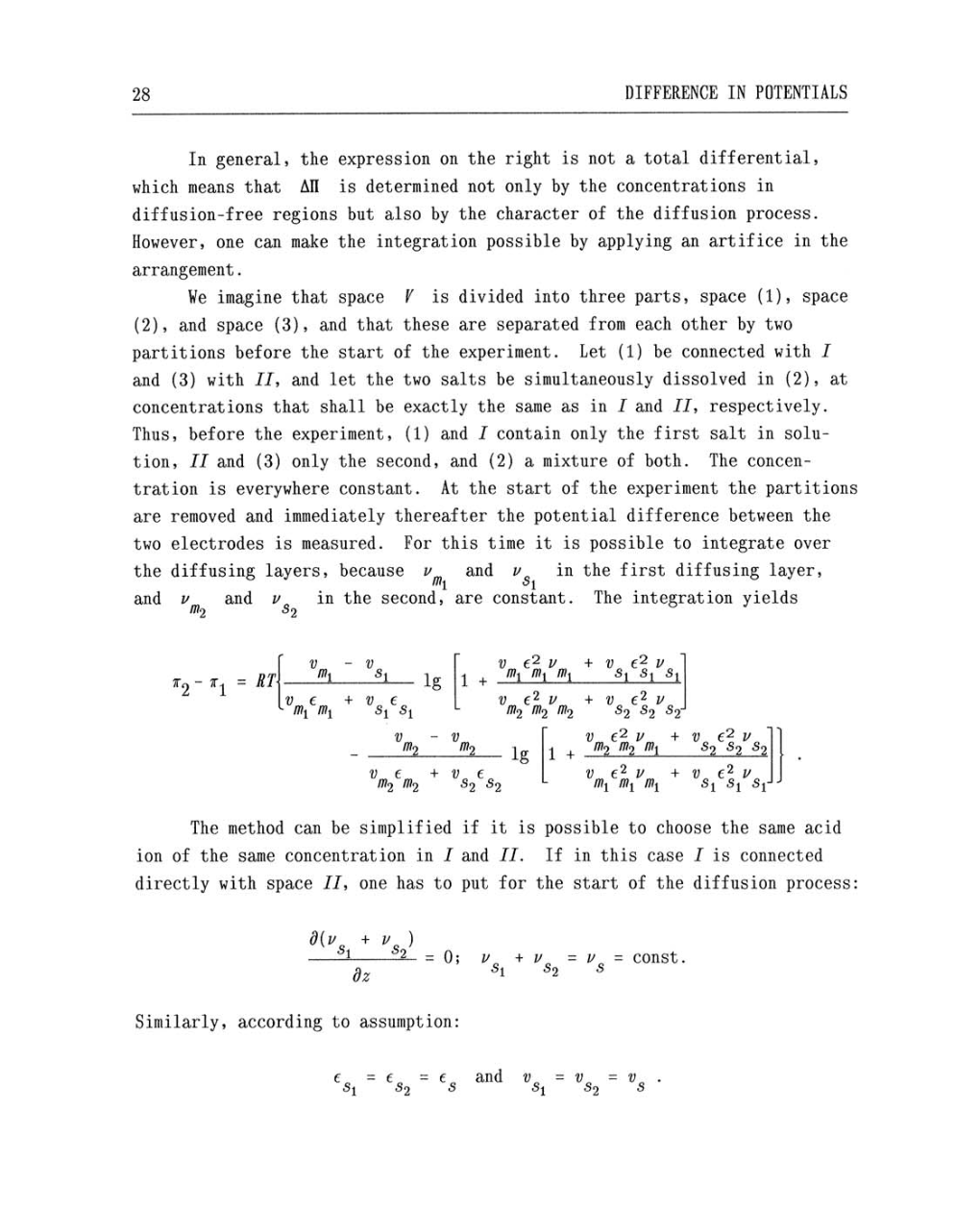28
DIFFERENCE
IN
POTENTIALS
In
general,
the
expression
on
the
right
is
not
a
total differential,
which
means
that
AII
is determined
not only
by
the
concentrations in
diffusion-free
regions
but also
by
the character
of the
diffusion
process.
However,
one
can
make
the
integration possible
by
applying
an
artifice in the
arrangement.
We
imagine
that
space
V
is divided
into three
parts,
space
(1),
space
(2), and
space
(3),
and
that these
are
separated from each
other
by
two
partitions before the
start
of
the
experiment.
Let
(1)
be
connected with I
and
(3)
with II,
and
let the
two
salts
be
simultaneously
dissolved
in
(2),
at
concentrations that shall
be
exactly
the
same as
in I and
II,
respectively.
Thus,
before the
experiment, (1)
and I
contain
only the
first
salt in
solu-
tion,
II and
(3)
only
the
second, and
(2)
a
mixture
of
both.
The
concen-
tration is
everywhere
constant.
At
the
start
of
the
experiment
the
partitions
are
removed
and
immediately
thereafter the
potential
difference
between
the
two
electrodes is
measured. For
this time it is
possible
to
integrate
over
the diffusing
layers,
because
vm1
and
vs1
in
the
first
diffusing layer,
and
vm2
and
vs2
in the
second,
are
constant. The
integration yields
r2 =
RT
V
-
v
lg
V
€
+
-
%
m1
V
n
€n
Si 5!
V
m2
1
+
-
v
m2
v e
+
% %
V
V
/»i
m1
+
V
V
S\
S1
S1
v" e2
v__
+ v
_
e?
v
% %
m2
lg
v
n
e
s2 s2
1 +
s2 s2 s2'
V V
+
m2 M2
V
n
t2-
V
s2
s2
s2n
v
ez
v +
m1
%
v
el
v
si
si sr
The
method
can
be simplified
if it is possible
to choose
the
same
acid
ion
of the
same
concentration in I
and II.
If
in
this
case
I
is connected
directly with
space
II,
one
has
to put
for the
start
of
the diffusion
process:
d{v + v
)
!
=
0;
v +
v
=
v
-
const.
dz
Sl 52
5
Similarly,
according
to assumption:
e
=
e
=
e"
and
vn
=
vn
=
vn
.
Si S Si
S2
S
